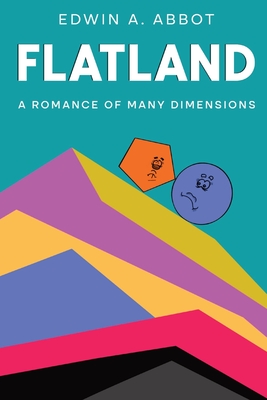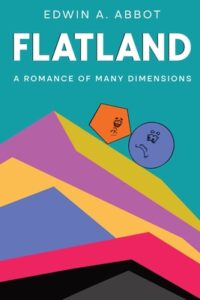Section 14: How I vainly tried to explain the nature of Flatland
bySection 14 begins with my desire to gently guide the Monarch of Lineland toward a clearer understanding of his own limited reality. His world, composed only of a single dimension, made it difficult—if not impossible—for him to comprehend anything beyond length. Yet, as an inhabitant of Flatland, I felt a responsibility to introduce him to truths that lay just outside his perception. My questions were framed with care, hoping to draw connections between what he believed and what might be possible. I asked how he could recognize his subjects’ forms or positions if all existed in a single line. To me, it seemed evident that differences in size and position might be seen with the eye, but I soon discovered that such notions were rejected in his world. The King, fixed in his dimensional reality, found sight unreliable and relied instead on sound to perceive shape.
My attempt to explain the visible difference between a Line and a Point was quickly dismissed. He called it impossible and declared that shape could only be identified through hearing, not sight. The idea that visual perception could distinguish dimensions was utterly foreign to him. When I suggested the concept of length existing alongside space, he grew defensive. In Lineland, space and length are considered identical, and any deviation from that belief was taken as insult or nonsense. His resistance reminded me how firmly people can hold onto beliefs shaped by limited experience. Even when presented with logical alternatives, deeply ingrained ideas tend to override evidence. The King’s insistence on auditory cues over visual ones reveals not just how they interact, but how closed-off his world is to anything unknown.
This exchange highlighted a common human tendency—to mistake familiarity for truth and to reject ideas that can’t be explained by past experience. The King’s outrage at my questions didn’t stem from malice but from the impossibility, in his view, of my claims. His understanding of existence was bound by a single dimension, just as ours might be bound by three. It serves as a cautionary metaphor: when people resist new perspectives, they can become prisoners of their own limited knowledge. Dimensional bias, if left unchallenged, leads not only to ignorance but also to fear of deeper understanding. For readers, this interaction between Flatland and Lineland becomes more than just geometry—it represents the very real challenge of expanding perception beyond what feels safe or normal.
What becomes striking here is the parallel between dimensional awareness and intellectual growth. Just as a line cannot understand a square, a closed mind resists truths that fall outside of learned frameworks. By reflecting on the King’s behavior, one may begin to recognize how often we, too, dismiss unfamiliar concepts without seeking deeper understanding. In practical life, this might show in how we view other cultures, new technologies, or unconventional ideas. When confronted with something outside the norm, the reaction is often disbelief rather than curiosity. This encounter makes a compelling case for humility in learning and openness in thought. The moment we assume we know all there is, we close the door to meaningful discovery.
I realized, in dealing with the King, that no amount of description would help him see beyond his line. Without a second dimension, the very idea of ‘above’ or ‘below’ had no meaning to him. His anger was not just at my words, but at the impossibility of what those words represented in his mind. This showed me that true communication isn’t always possible when perceptions differ too greatly. Understanding can only occur when there is at least some shared frame of reference. Where that is missing, patience and imagination must fill the gap. My efforts to reveal Flatland to the King of Lineland were doomed—not due to failure in delivery, but because his world could not contain such concepts.
Yet, despite the failure to convince him, I walked away with insight. His resistance had taught me something vital about Flatland’s own rigidity and my own assumptions. Just as he clung to his belief in length alone, many in Flatland held to the belief that height was a fantasy. Perhaps, to someone in a higher dimension, our understanding would seem just as simplistic. This moment pushed me to reconsider not only how I communicate new ideas, but how I respond when others question my own truths. The interaction with the King of Lineland was not just a missed opportunity to teach—it was an invitation to reflect.


